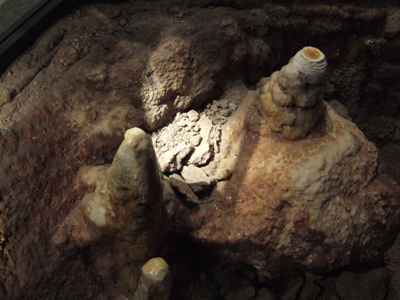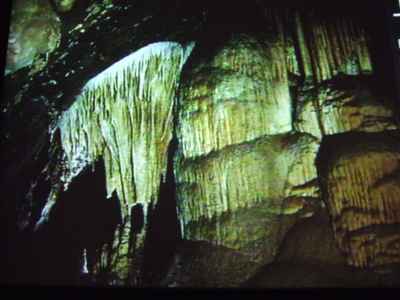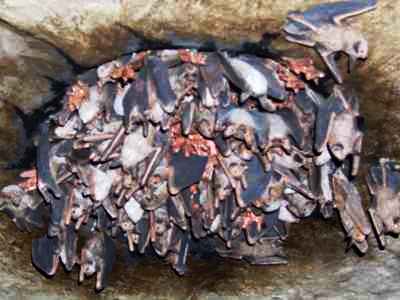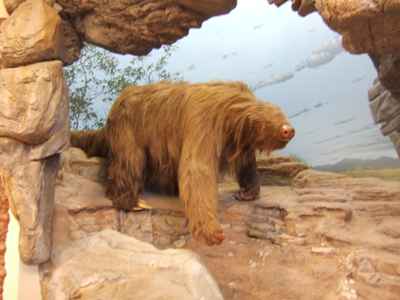| Heading east from Tucson we turned off just before Benson and
stopped to visit Kartchner Caverns. These are natural limestone caverns
which were discovered in 1974. Most caves have been visited and damaged in
the past but these had not and so are of unique scientific interest. Great
care has been taken to avoid potential damage by visitors, particularly in
the management of air flows and the introduction of contaminants brought in
by the visitors, as the cave has 90% humidity. |  |
 | There are two
tours and we went on the longer one to the Big Room, and it really is large.
The other tour covers the Rotunda and the Throne Room. The Big Room tour
only runs in the winter because female bats use the cave to have their young
in the summer. There are many restrictions on visiting, the most difficult
(for me) is that there are no photographs permitted (for safety reasons
rather than damage to the caves). So some of the photos here are from photos
in the visitor centre and the rest have been lifted from their web site.
That is the case with the next block of six. |
I am not sufficiently knowledgeable to describe the various features but the
guide we had was excellent and really knew about all of the key points. He did
have his patter and kept putting off explanations until where he wanted to talk
about them. There were only four on our tour and the other tour was cancelled
due to lack of interest. It was a pity about the photos because most of the
things he was concerned about weren't relevant to such a small group.
This is a huge cave system and the tour system has been well thought out and
would be quite feasible even to disabled people. Our tour was almost two hours
and the other one was only slightly shorter. If photos had been permitted, I
would have done both.
| No this isn't a bat colony, it is actually a bronze sculpture of
such a colony. Nobody knows where the bats go to when they aren't in the
cave. There is a research project trying to find out, but the bats are very
tiny and so can't be fitted with tracking devices. |  |
 | One of the
fascinating finds in the cavern system (which has only been open to the
public for two years) is the remains of this giant Shasta ground sloth whose
bones have been dated to over 86,000 years ago. The creature was previously
thought to have only to lived much farther north. |
|